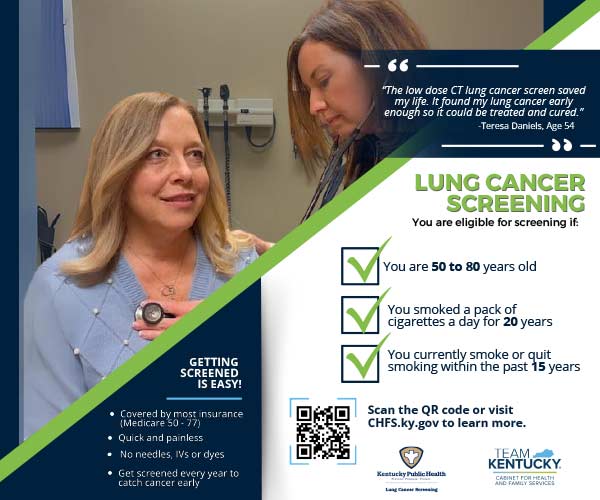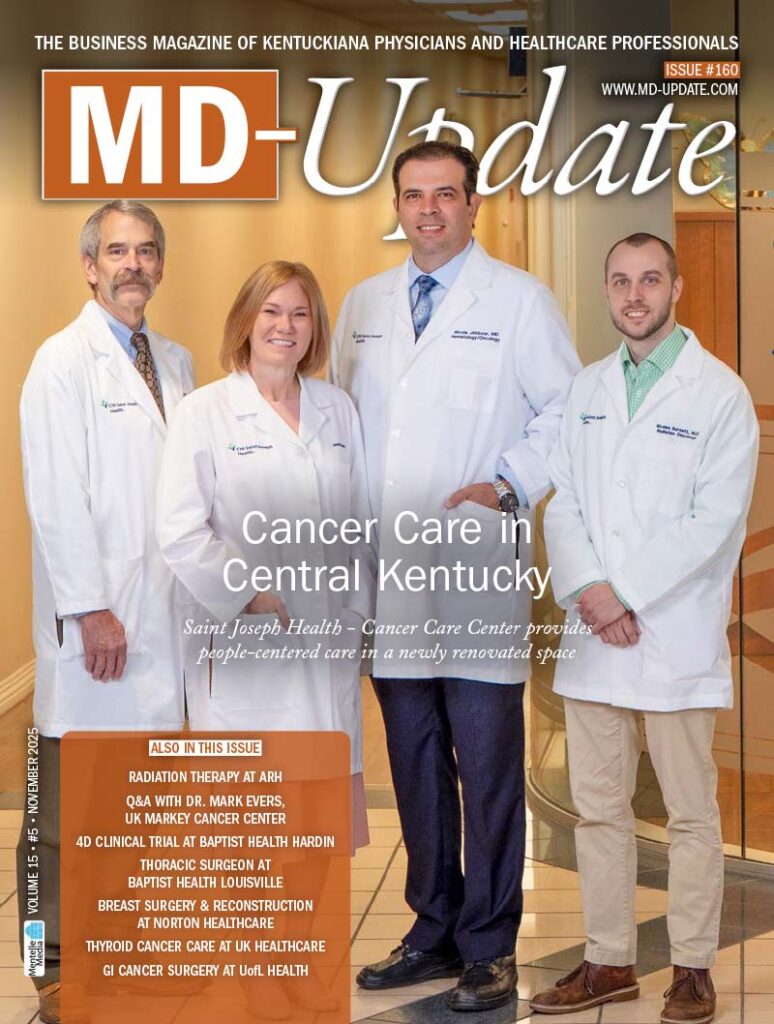Dr. Marc Paranzino brings sports cardiology to Kentucky
LEXINGTON Athletics and heart are synonymous. Just listen to any coach’s pep talk and you’ll hear phrases like “We showed a lot of heart out there” or “What he lacks in talent, he makes up for in heart.” They are clichés, but they are also true in the sense that a strong, healthy heart is essential for an athlete’s success and safety.
Because of their extensive exercise and training, athletes are generally assumed to be healthy and fit. The reality is, however, that athletes are susceptible to the same serious health conditions as anyone else. Even heart conditions.
“There’s this common misconception that athletes and fit people can’t have heart disease,” says Marc Paranzino, DO, who established the Sports Cardiology Program at UK HealthCare’s Gill Heart & Vascular Institute in the fall of 2023. “I realized that there was this need for high-level, athlete-specific cardiac care, particularly in this area.”
Paranzino’s awareness of heart health in athletes was born out of his own athletic experience. He grew up in Massachusetts, about 40 miles south of Boston, and spent much of his youth scuba diving, so much so that he planned to study marine science in college. He followed that path to Eckerd College in St. Petersburg, Florida, but was unfulfilled with his career.
He enrolled in medical school at Lincoln Memorial’s DeBusk College of Medicine in Harrogate, Tennessee. Following graduation he then completed his internal medicine residency and cardiovascular disease fellowship at UK. He and his wife Alisha, who is a plastic surgeon, moved to Boston for a year where she completed her fellowship. Paranzino took advantage of the time to gain additional experience in sports cardiology, which drew his interest after he developed a passion for endurance sports.
“Historically I had been involved in a lot of team sport activities, but when I found endurance sports, particularly running, I decided I was going to train for a marathon,” Paranzino says. “In doing so, I became fascinated with the physiologic adaptations that your body undergoes during training. I think that was the beginning of my path to cardiology and sports cardiology. When I got into medical school and started learning about the cardiovascular system and the diseases that can be associated with it, I knew that was it for me.”
“There’s this common misconception that athletes and fit people can’t have problems or can’t have heart disease.” — Dr. Marc Paranzino, University of Kentucky Gill Heart & Vascular Institute
What Is Sports Cardiology?
Paranzino describes sports cardiology as general cardiology applied specifically to athletes and active individuals. He treats conditions ranging from those with known heart disease such as hypertrophic cardiomyopathy (HCM) or valvular dysfunction to athletes with symptoms concerning for heart disease including chest pain, syncope, or exercise intolerance. Paranzino notes “athletes can have training-related physiologic adaptations that often mimic pathologic conditions, and much of the specialty is focused on differentiating the two.” Paranzino has remained active in the endurance community, having completed multiple races including three Ironman triathlons. He was inspired by his fellow athletes and their questions about their heart health. They would ask about their heart rate readings on their fitness devices and why they were out of breath.
“What I started to realize was that people had genuine questions,” Paranzino says. “I was disheartened by the fact that they would try to find these answers, and oftentimes, they were dismissed. When I was in fellowship training, I was reading a cardiology journal, and there was an article about the emergence of sports cardiology. I didn’t even know this specialty existed.”
The more he learned, the more he realized that not only was this a needed specialty, but one for which he was ideally suited. He developed the Sports Cardiology Program at UK with the assistance of his colleagues and mentors.
“One of my mentors at Gill Heart, Dr. David Booth, was seeing athletes long before I started this program,” Paranzino says. “He wasn’t doing it in the formalized setting, but he had already laid the groundwork, and we took it one step further and made it an official program.”
It is the only formalized sports cardiology program in Kentucky. Naturally, it has filled a significant need and, as such, has received the full support of the UK Gill Heart & Vascular Institute.
“Gill Heart has been so supportive in building this program,” Paranzino says. “They understand the value of being able to provide high-level, athlete-specific sports and cardiovascular care. I am fortunate to have such amazing colleagues here. We’ve now created this program of general cardiology and applied it to athletes.”
The Nuts and Bolts of Sports Cardiology
The sports cardiology program offers a multidisciplinary approach to treating athletes including advanced cardiac imaging (cardiac MRI, cardiac CT, and echocardiogram). It also includes specialists, such as electrophysiologists, congenital heart experts, and exercise physiologists.
Patients come to Paranzino via a variety of referrals, including from colleges and universities throughout Kentucky and surrounding states. “We are heavily involved in screening programs for college and professional athletes,” Paranzino says. “Maybe this is an athlete that had an abnormal pre-participation screen by an athletic trainer, sports medicine physician, or primary care physician. They are sending them to us for further evaluation.”
Paranzino’s first meeting with his patients involves compiling a detailed athlete-specific history, including information about their symptoms, training, family history, supplements, and medications.
“We do a deep dive into what testing they have had and try to understand if it was actually abnormal,” Paranzino says. “If it was abnormal, we determine if we need to do further testing such as advanced cardiac imaging or exercise testing. Or, if it was normal, we want the athlete to understand why it was normal.”
Most of Paranzino’s patients are 18 and over, though many referrals come from high schools. In those cases, Paranzino works closely with the pediatric cardiology program at UK. Otherwise, most of his patients range from young elite college and professional level athletes to masters athletes in their 60s and older who are active and want to stay active safely.
Sports Cardiology Is Out on the Field
Typically, Paranzino does two days of dedicated clinic during the week and one full day of cardiopulmonary exercise testing. He splits the rest of his time between on-site athlete screenings, research, diagnostic studies, and teaching activities with the residents and fellows.
“All too often, healthcare is practiced within the four walls of a hospital or a clinic,” Paranzino says. “One of the things I love about sports cardiology is the engagement in the community. That is my motivation. I can help educate race directors about how we can be prepared with an emergency action plan if something happens, or make sure we have the right AEDs in place at a swim meet. I can build relationships with athletes, coaches, and trainers and see an athlete get back to doing what they love.”
Paranzino says that fear has hampered part of that process in the past. Horrific, highly visible incidents such as those suffered by Hank Gathers, a basketball player at the University of Maryland and Buffalo Bills football player Damar Hamlin, create understandable anxiety and caution.
“We were very afraid for a long time of athletes participating in sport with any question of heart disease,” Paranzino says. “There were so many times we would tell athletes they couldn’t play — not because we truly knew or had the data to support that, but out of fear. That has a big effect on people — telling someone who loves to be active that they cannot be active anymore. Having the ability to help move this field forward and not practice out of fear, but out of knowledge and evidence, motivates me to continue.”
Sometimes, it takes a lot of heart to be a doctor, too.



